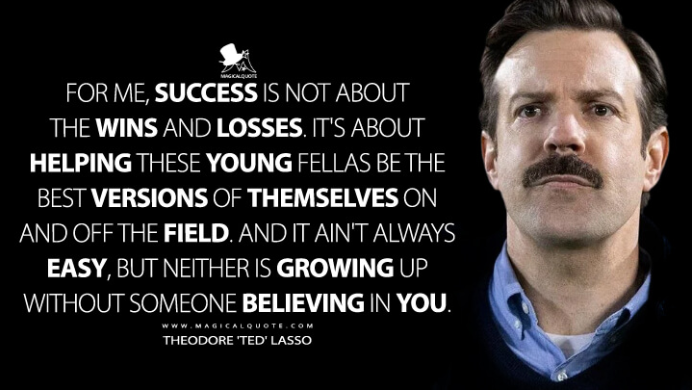Ep 4 – What Exactly Is Success and How Will I Know If I’m Successful?

I gave a talk back in 2016 about successful people and how to become one. Initially, I thought I would cannibalize my own writing and tweak it for y’all. In the course of reading through the presentation, however, I see how much the meaning of “success” (like everything else in 2020/2021) has dramatically changed.
Habits
Still, because I’ve been pushing for self-awareness, we can adjust those regimented “rules of success” to make them relevant in our post-pandemic world. These are the habits and traits I spoke about back then:
- Close all apps and windows except the one you’re working in. OK, this isn’t bad advice, but it’s not always practical. I would also include using a timer app (such as Intermission) to force you to look away from your screens at pre-selected intervals. It’s too easy to get hyper-focused on a task and, while that is productive, it can be harmful to our hand, our back, and our eye health. And, really, what is more important than health?
- Successful people say no to nearly everything. They say yes only when it’s something that gets them seriously excited. Ohmigoshwhatwerewethinking?!?!?! This may be how someone climbs over everyone on a corporate ladder or creates megacorporations that take advantage of their employees. This, however, does not equate to success. Saying “yes” is much more satisfying than saying no. Saying yes also creates space for you to network, which can be life-changing (my coming to JumpCloud would never have been possible if I said no). Neither of these, exclusively, creates success…knowing when to use them (and then using them) does.
- Pareto Principle: 80% of your outcomes comes from 20% of your activities (80% business comes from 20% of your customers). This has some value, however it would seem to be a poor habit to encourage. For small businesses, it is dangerous to have so little diversification. Ideally, you want your business coming from a more evenly distributed portfolio of clients. Always prognosticate what would happen if your largest client leaves. Will you survive or will you struggle?
- Schedule personal time.This is a mindset item that can make family time feel like just another appointment. Rather than scheduling in your family time or date night, schedule specific time to not-work. Then make your specifics into habits. Sounds similar but feels different. In this time of remote work, stepping away from the office can be challenging. It is important to our health and our relationships to step away, both physically and mentally.
- Do certain things on certain days. This statement is more of a habit-making or habit-stacking philosophy than a restrictive schedule (like always filling your car on Sundays, even if it doesn’t really need it). With so many people working remotely these days, we realize that flexibility and fluidity are more important than which day is laundry day. Sometimes, laundry day flows into the work week (brb, have to turn on the dryer).
Time Marches On
There are 1440 minutes in the day. How you use them is up to you. Generally speaking, roughly:
- 480 minutes should be spent sleeping;
- 120 minutes spent on waking and pre-bed routines;
- 480 minutes spent working;
- 360 minutes per day are left for eating, family time, commuting, exercise, relaxation.
Last week you chose 3 goals to work on. This week, let’s get specific about how to conquer them. One doesn’t simply wish goals into reality, right? Let’s pick a method to use to work towards those goals.
To-Do or Done
Many of us create To-Do lists. But to-do lists on their own are ineffective. Think about it. How do you feel when you see a list of 20 or so items sitting there? Just sitting there. Staring you in the face. Laughing at you. Taunting you. It’s just a list. It’s not prioritized, it’s not specific, and there’s no time commitment. There’s no relationship between the tasks. And when you don’t get the list clean how do you feel? It is too easy to say, “bah, I’ll just do it tomorrow” when it’s on an uncommitted list. As always, using the right tools will make it easy to be successful.
Tool: Mind Mapping
I am a visual learner/thinker. For folks like me, mind maps are amazing tools. I used them for project planning, for brainstorming, for building out organizational ideas, for teambuilding, for authoring, and more. You can mind map with pen and paper, of course, but using a mindmapping tool that integrates with your task management software is the epitome of cool tools to help manage your goals.
Yes, you read me right – it’s time to wake up those electronics. w00t! I’ve been mind mapping with Simple Mind for years. It’s easy to learn and it’s cross platform. But if you want to integrate your mapping tool with a task manager, it isn’t the right tool. For that you want something like MindNode and OmniFocus. Full disclosure: I am not an experienced user with either of those apps but it’s a topic we could definitely talk about in the JumpCloud Lounge.
Use Your Calendar!
So how do you decide what to do first? Do you do lots of small things first and get them out of the way? Or do you handle your MIT (Most Important Thing) first? That depends on your ability to control your own schedule.
If you can block out 1-2 hours first thing in the morning, then MIT is the winner. If you only have small uninterruptible time slots, then completing many small things will make you feel more productive and will move you closer to your goal. If you’re finding it hard to get that MIT done, then schedule two 2-hour sessions each week and notify your team that you are in Goal Mode. Those are the 4 hours in your week that you are uninterruptible. Put your phone on DND, close Slack, and don’t open your web browser or your email. Take 10 minutes at the start of your DND time to meditate and then get down to being amazing.
So this week, grab your tools and start mapping out your goal strategy. Share your maps, your task manager setups, and your successes in JumpCloud Lounge #AdminLife channel!
Published on 10/21/21 – https://jumpcloud.com/blog/setting-goals-ep4
